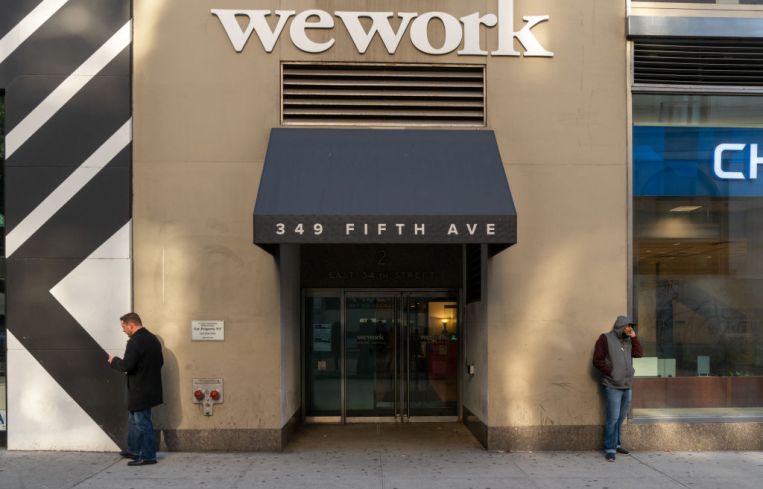WeWork Made More Money Than It Lost for the First Time Since 2020
By Celia Young May 12, 2022 2:05 pm
reprints
WeWork’s revenue in the first quarter of 2022 increased to $765 million, outpacing its net losses for the first time since the first quarter of 2020, according to the company’s first-quarter earnings call Thursday.
The coworking business’ $504 million net losses steadily declined last year and took a 37 percent dip from the fourth quarter of 2021 to the first quarter of 2022, compared to dropping just 5 percent in the fourth quarter of last year. Its stocks rose after the announcement and it was trading 9 percent higher on Thursday afternoon at $5.60 a share.
WeWork’s revenue changed less drastically, remaining lower than pre-pandemic levels — back when the firm was pulling in $881.7 million in the first quarter of 2020 — but ticked up 7 percent from the last quarter of 2021 and 28 percent year-over-year, according to the earnings report.
“Our first-quarter results underscore the long-term value of WeWork’s holistic offerings that are tailored to a new era for the office market,” Sandeep Mathrani, CEO and chairman of the company, said in a statement. “Having built a more sound and disciplined operating model, WeWork is well positioned to capture demand, grow occupancy and achieve revenue goals established at the beginning of 2022.”
The coworking giant’s consolidated desk sales, which excludes franchise locations, was the highest it’s been since 2020 at 166,000. WeWork sold 83,000 new desks — single-person office space — in the first quarter, slightly less than its 87,000 new desks in the fourth quarter of last year. In total, it sold 211,000 desks in the first quarter, compared to 217,000 in the fourth quarter of 2021, and WeWork’s average lease was for about 20 months.
WeWork’s U.S. locations are about 63 percent occupied by workers, with Miami being the city with the most in-person work, at 92 percent occupancy. New York hovered around 66 percent, followed by Boston at 65 percent occupancy.
WeWork’s occupancy in New York City at least is bucking the remote-work trend: On an average day, Manhattan office buildings are only 38 percent occupied, according to a recent survey from the Partnership for New York City. Only 8 percent of Manhattan office workers are heading into their cubicles five days a week, and nearly 80 percent of employers prefer hybrid work.
Celia Young can be reached at cyoung@commercialobserver.com.


